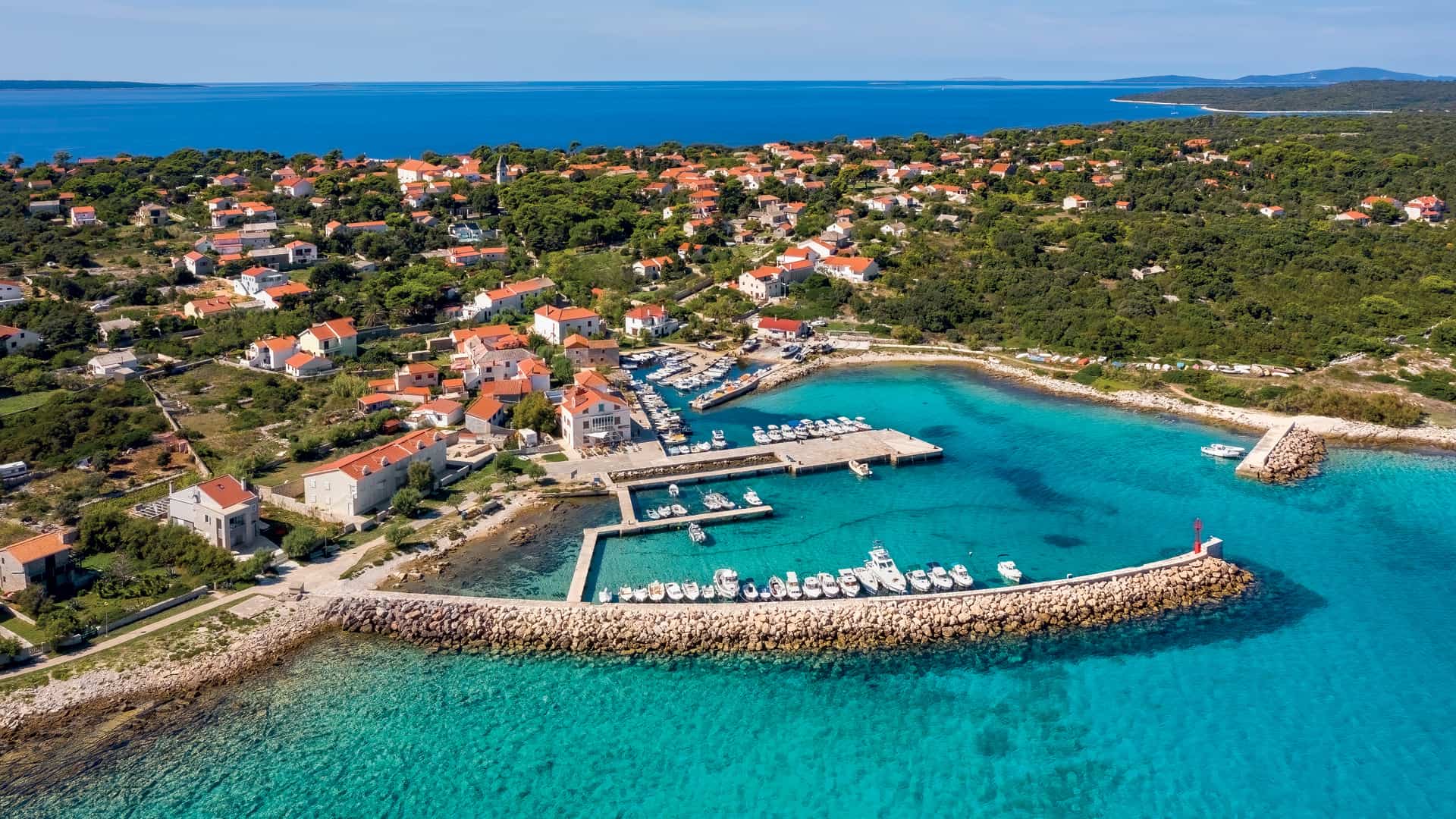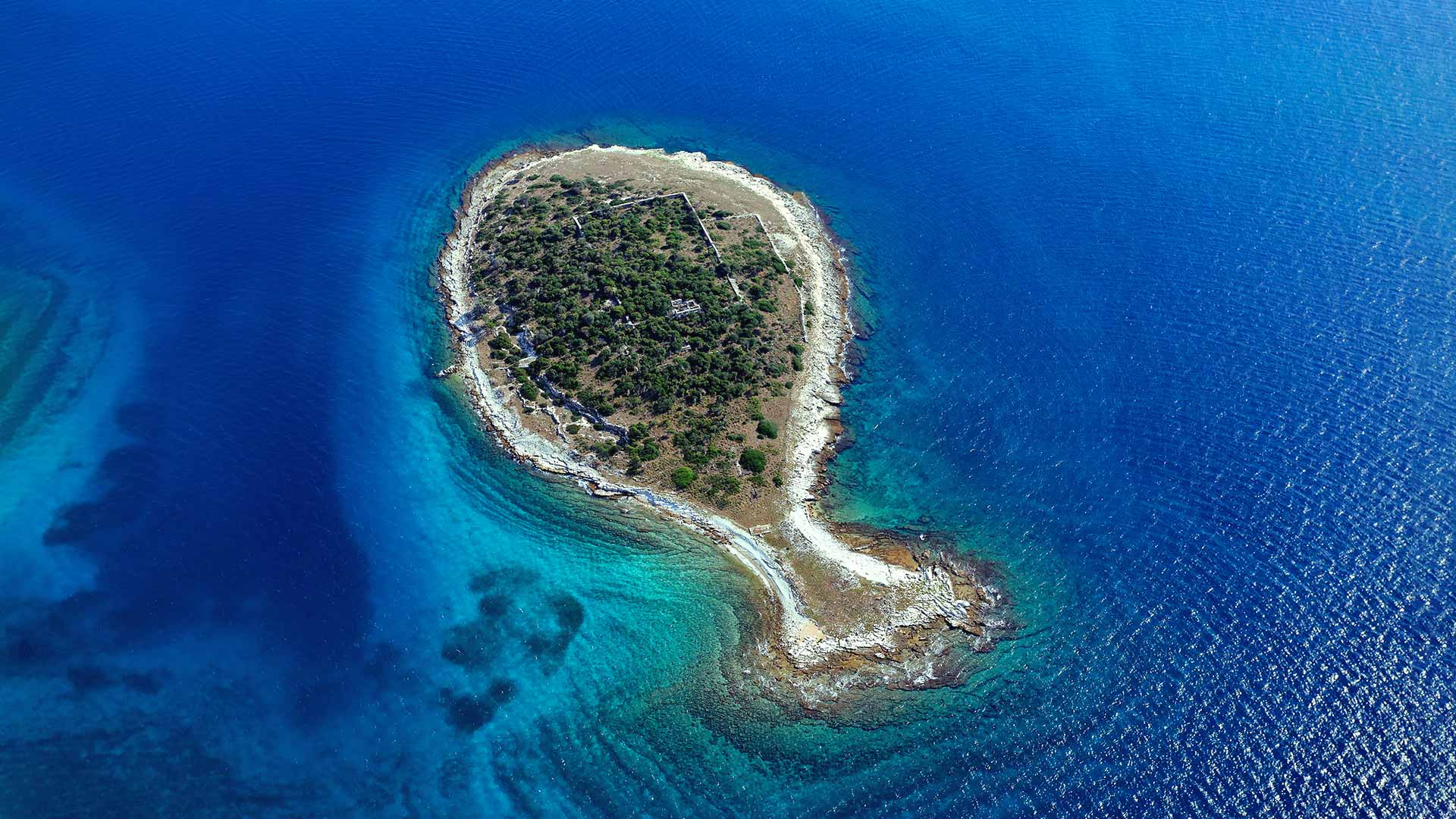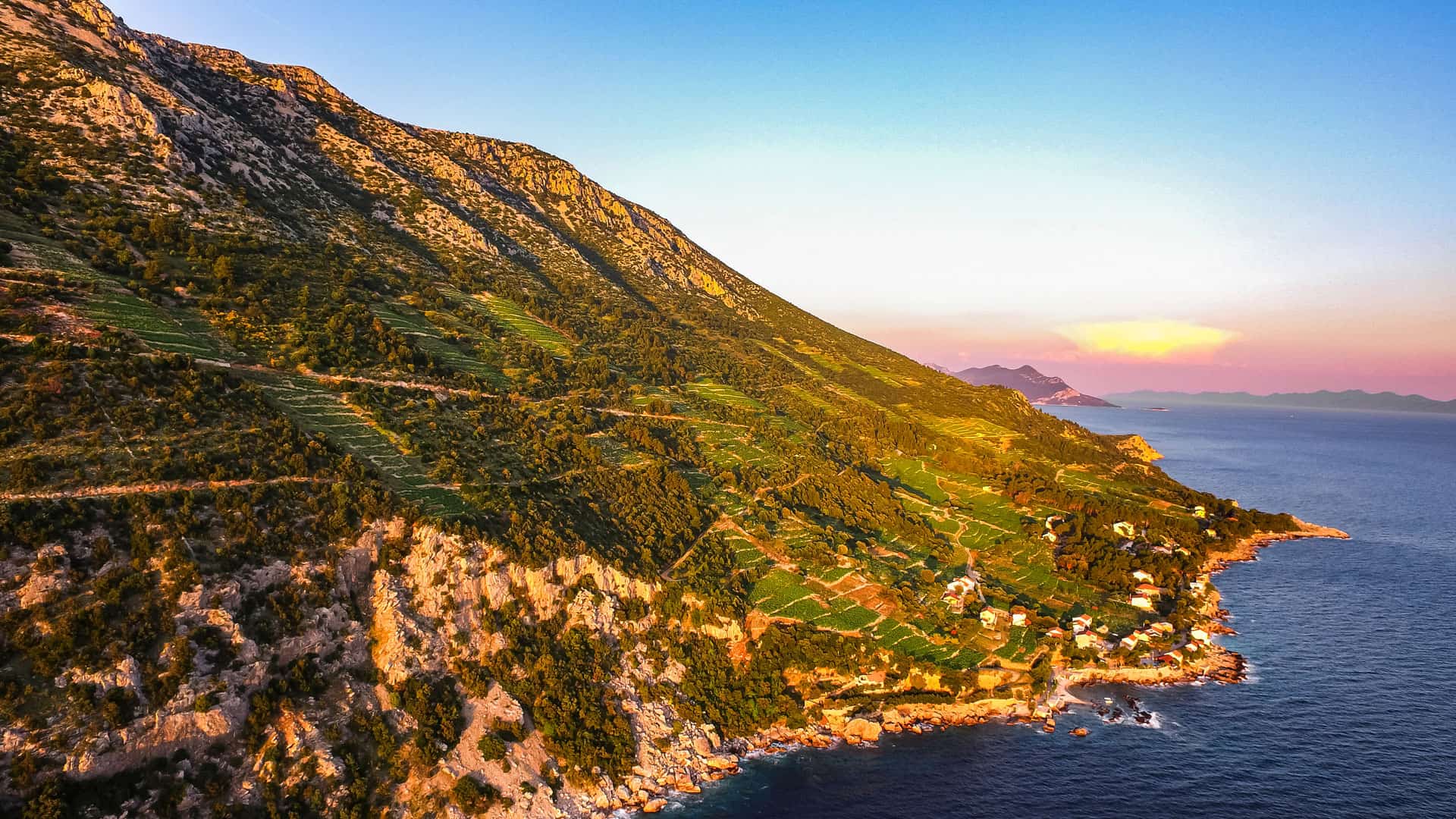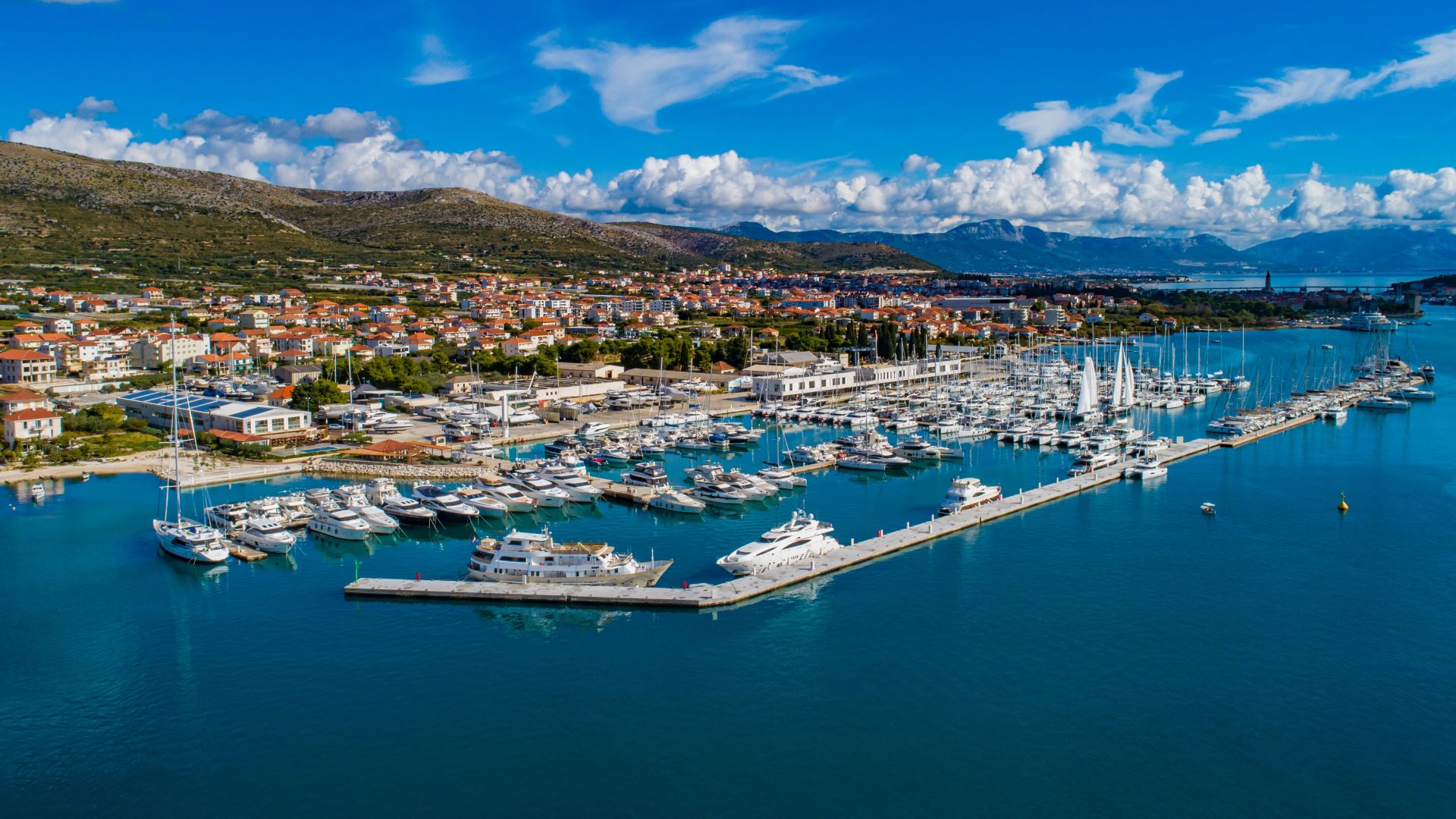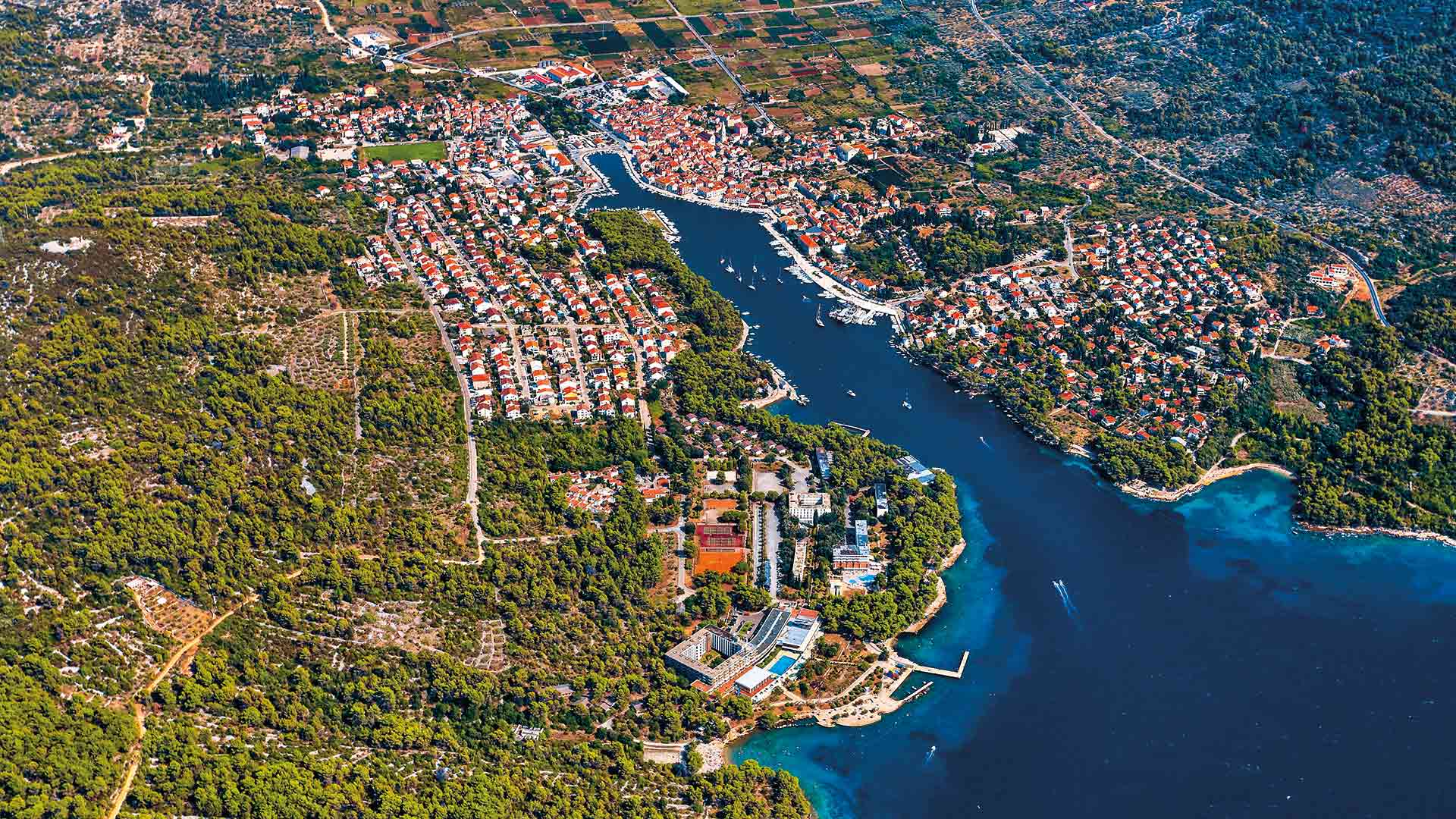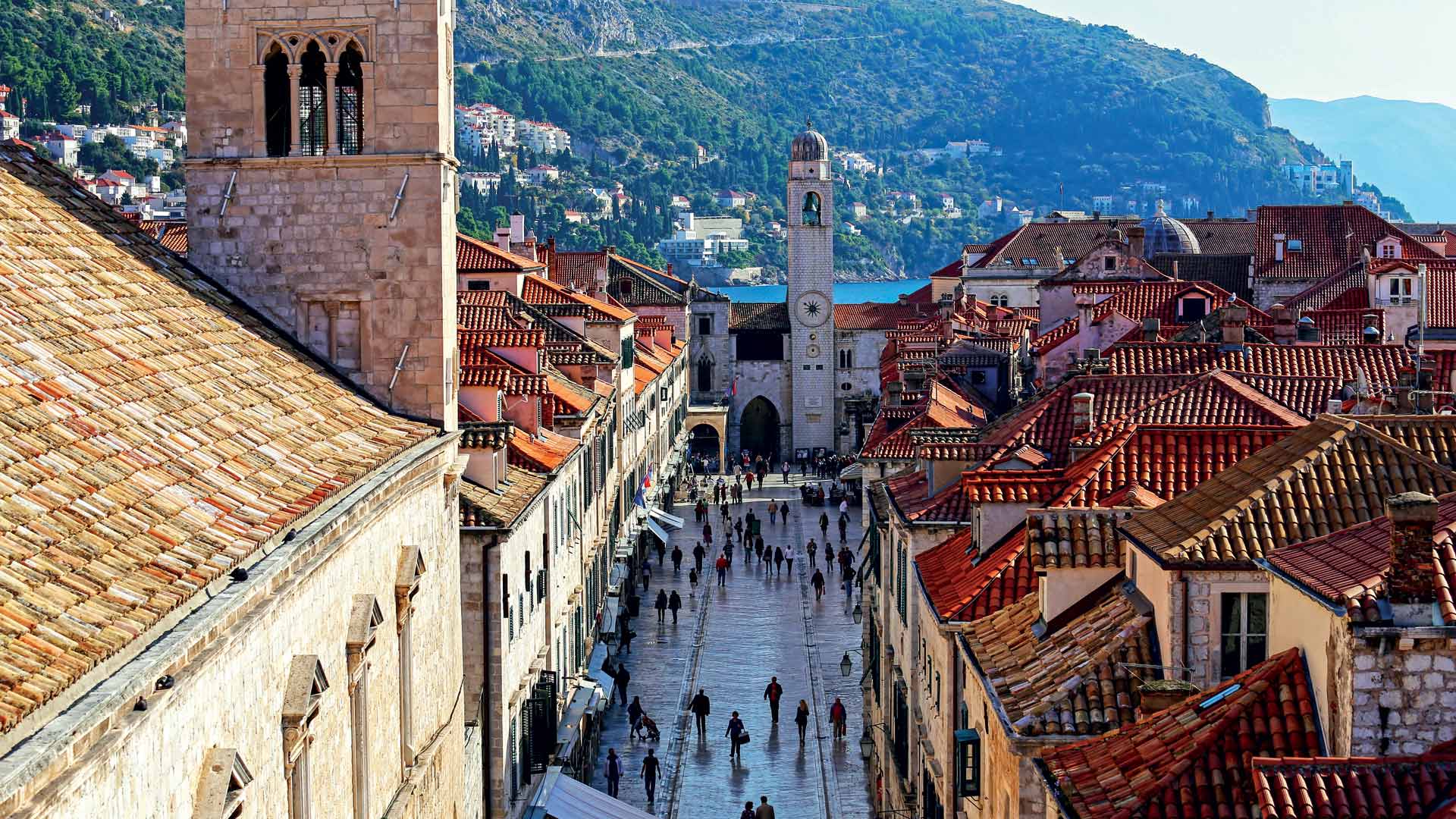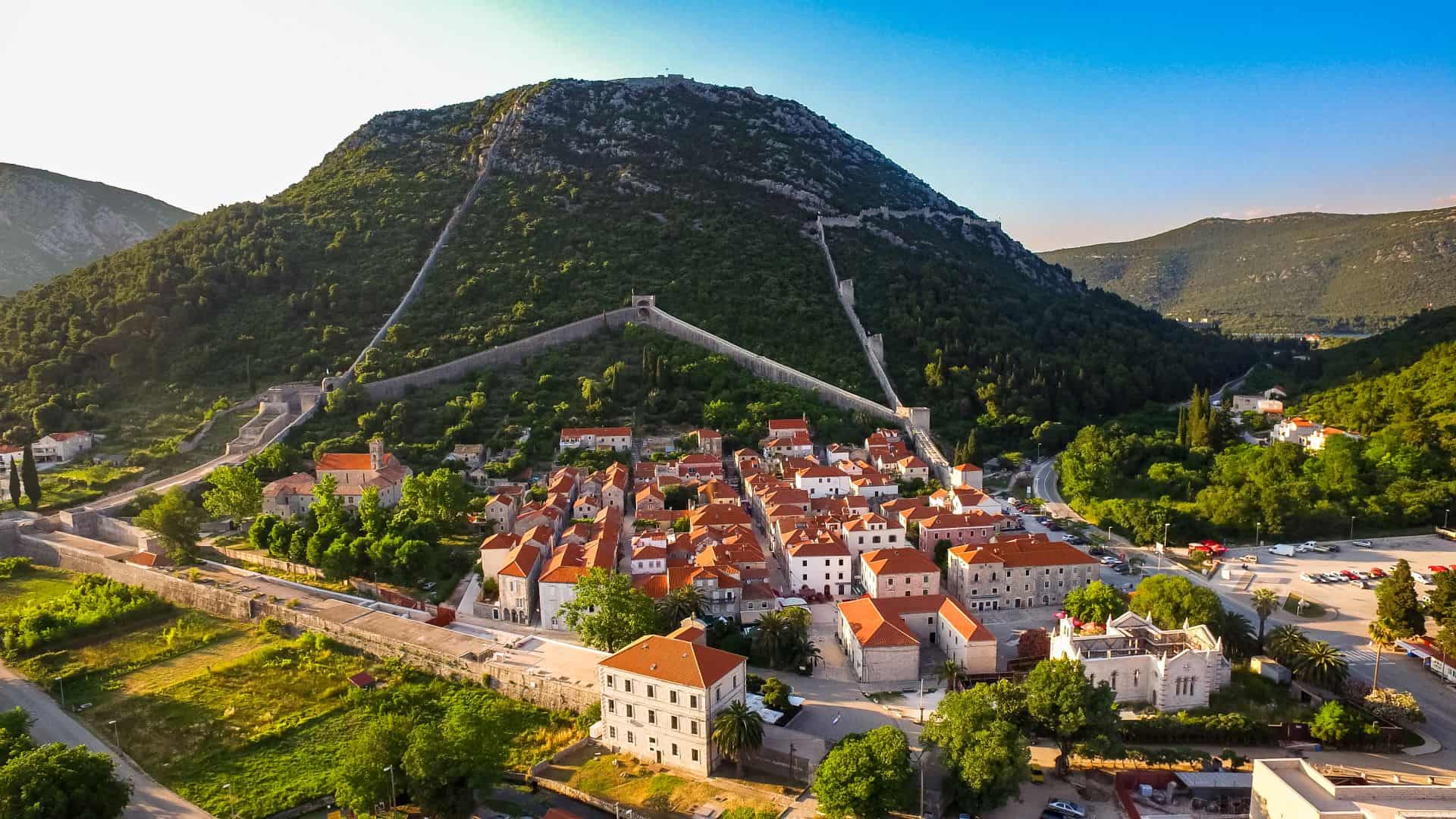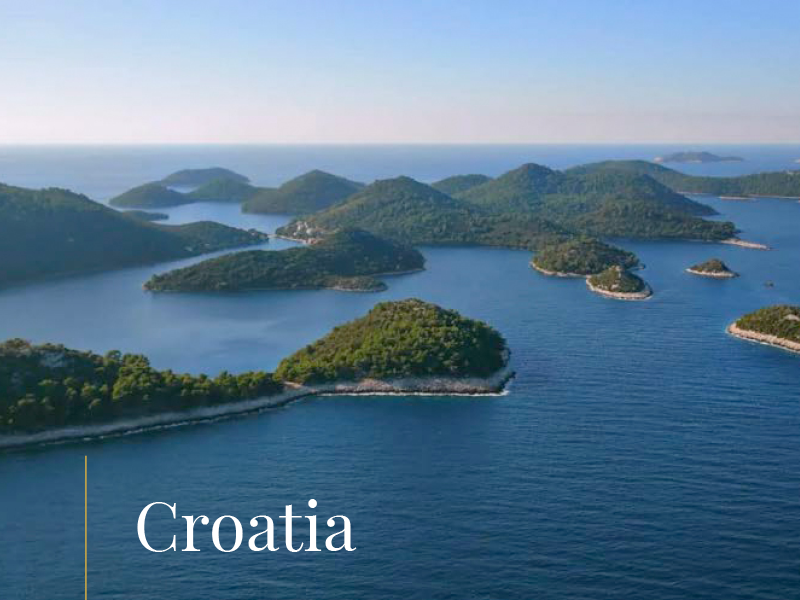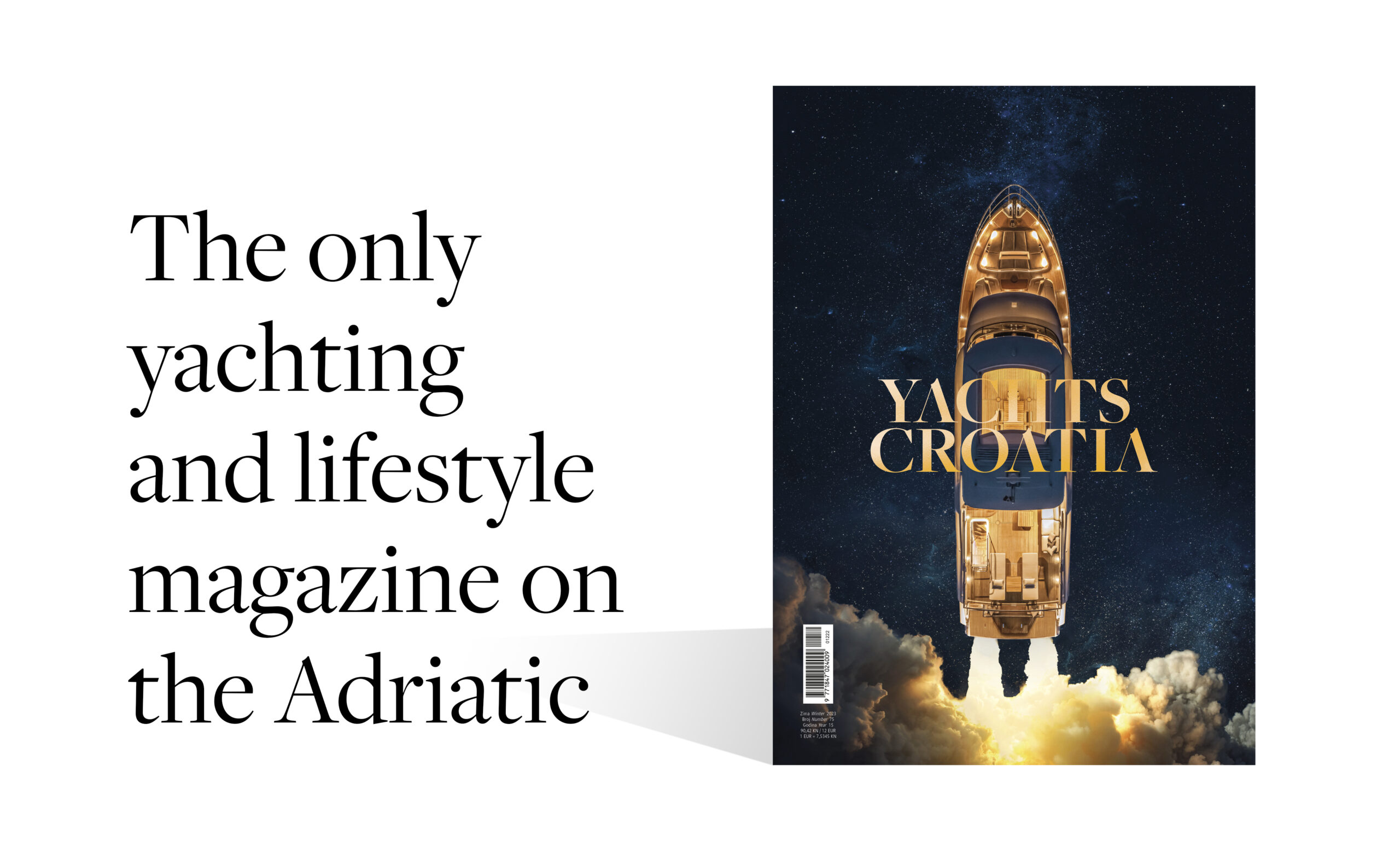Unique monumental and natural sites of each state are invaluable for the entire mankind. People do their best to protect them, preserve for the next generations, present and promote their value
Dubrovnik
The historic heart of Dubrovnik as it is today came into existence in the 7th ct. through merging of the settlement on the rock Laus, especially developed after providing shelter to the refugees from the devastated Epidaur (today known as Cavtat), and colony on the coast. The old town still preserves the features of the urban core established in 1272 through the Statute, which defines layout of the streets and squares, their width and location.
The town walls, finished in the 15th and 16th ct., are 1940 m long and are adorned with the towers Minčeta, Revelin, Bokar, St. Luka, St. Ivan and – the oldest one Lovrijenac. The central street of Dubrovnik, well known as Stradun, stretches in the southeast-northwest direction, and rests on the bank which used to connect the two parts of the town. One can enter the historic core through the Pile Gate on the west and Ploče Gate on the south side.

When entering Stradun from the Pile Gate and stepping on Poljana Paska Miličevića, one of the first spectacular sies that greet you is the Great Onofrio della Cave Fountain. The most prominent Dubrovnik attraction, the Fransiscan Monastery is located on the north side of Placa. It was built in the 14th and 15th ct. and holds the tomb of the Croatian writer Ivan Gundulić. Luža Square, formed in 1441, is situated on the east side of Stradun and hosts Orlando Column, work of Bonina da Milano and Antun Dubrovčanin.
St.Vlaho church was originally built in Romanesque style, after being damaged in fire, it was renovated in baroque style in the period from 1705 through 1715 by Marino Gropelli. The statue on the main altar originates from the 15th ct., and was made in the town goldsmiths shops: on the main altar there is a statue of the patron of the city, St. Vlaho, holding a model of Dubrovnik. This represents a unique proof of what Dubrovnik looked like before the fatal earthquake in 1667.
Split
In 1979 UNESCO included the historic complex of Split and the Diocletian’s Palace, as one of the first urban sites, on UNESCO World Heritage List. It is considered as one of the most momentous Late Antiquity architectural monuments, not only due to preserved original parts, but its original architectural solutions announcing early Christian, Byzantine and early medieval art. The Palace is shaped as a rectangle, with two wide, perpendicularly crossed streets (Cardo and Decumanus), leading from the middle towards four gates situated on each side of the rectangle.
The south part served as residential area (emperor’s chambers and ceremonial atriums) and north part contained gynaeceum Iovensis, workshops where military clothes and equipment were made. The main streets meet in the centre of the Palace. Peristil is situated on the south side and faces Protiron, Vestibul of the Emperor’s quarters.
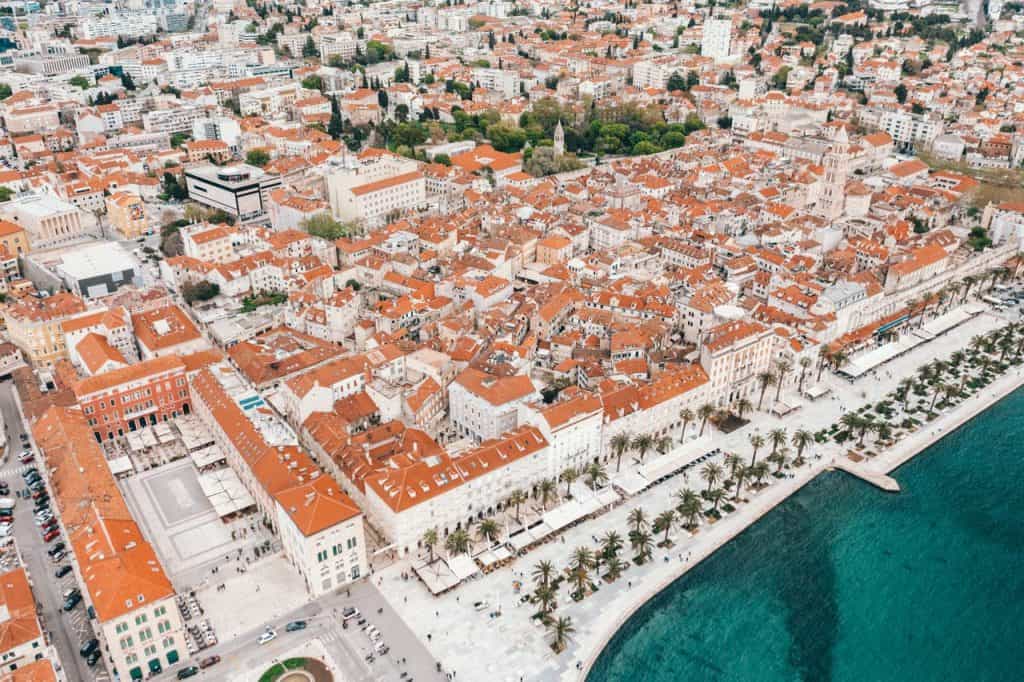
The Diocletian’s Mausoleum has preserved its original octagonal form, while the domed interior is round with two rows of red granite Corinthian columns. In the beginning of the 5th ct. the Diocletian’s Mausoleum was turned into Christian church and as of the beginning of the 7th ct. it was transformed into the cathedral. The Golden Gate is the most preserved sample of its kind from the Antique period, the only thing missing are the columns framing the niches hosting the statues (of Diocletian, Maximillian, Galerie and Konstancie Klor).
The Temple of Jupiter belongs to one of the best preserved monuments of the European heritage. It lies on elevated platform hiding underneath a buried crypt. The Church of St. Theodor is fascinating (gable of altar barrier was discovered inside, and on it a copy of the most beautiful Dalmatian icon, a miraculous Lady of the Bell Tower, made by master of the St.Clare’s crucifix dated from the 13th ct.). The late Gothic style Papalić Palace represents project and work of the master Juraj Dalmatinac (around year 1450) exhibiting a fragment of the town’s history, town Statute, crests, money and Romanesque sculpture from the cathedral’s tower bell.
Šibenik
Šibenik belongs to the only town of historic importance on our coast originally established by Croatians, symbolizing with its cathedral of St.James the most significant architectural accomplishment of the 15th and 16th ct. in Croatia. The construction started in 14 by transforming the older Romanesque church of St.James and with on and offs lasted till 1536. During the first decade of construction Venetian Gothic constructors and masters from Šibenik Andrija Budčić and Budiša Statčić worked on it. This period of construction resulted with south and north wall, Gothic style facade and both portals.
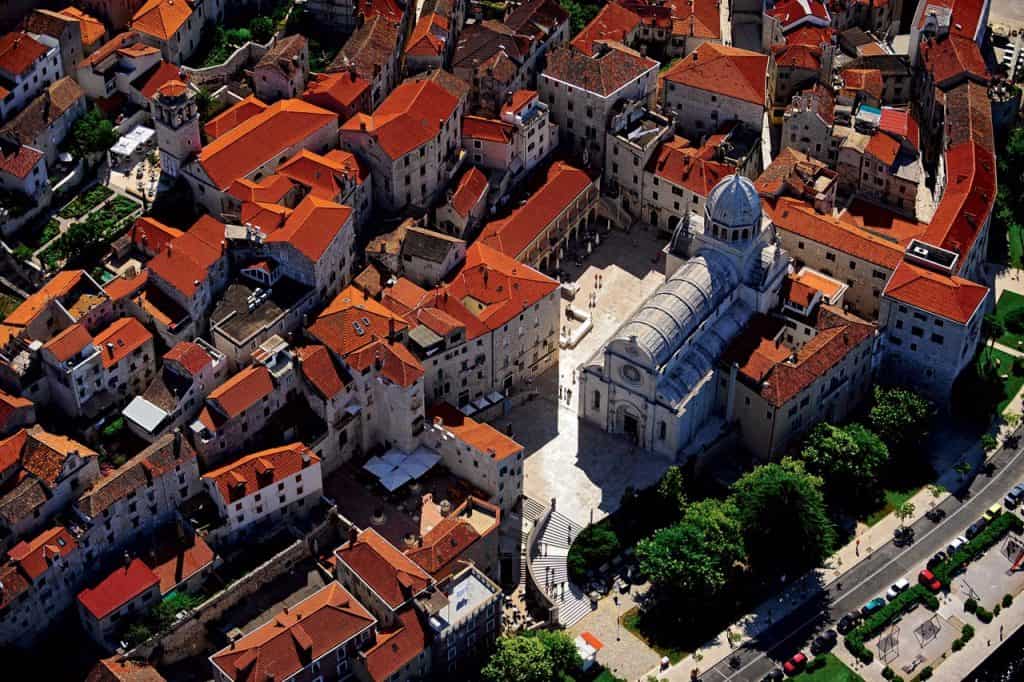
Two eminent architects, Juraj Dalmatinac and Niccolo Giovanni di Firentino gave later the final touch to its form. One hundred years period of construction brought alterations of three different architectural concepts with three styles interchanging: Gothic, Gothic- Renaissance and Renaissance. The Cathedral of Šibenik is a triple-nave basilica with three apses surrounded by wreath of 72 human heads, sculptures of the donators and four-sided sacristy.
The most impressive parts of this temple are the roof and the dome made purely out of stone, without using any binder. Juraj Dalmatinac placed baptistery, worth of every attention, inside the temple on the ground floor of the south apses. Since the Cathedral is positioned right next to the city walls it does not have a bell tower, so such task was appointed to one of the town’s towers.
Trogir
Trogir was founded by Greek colonists from the island of Vis in the 3rd century BC, hence it can be referred to as one of the oldest continuously inhabited towns of the Mediterranean region. The historic centre on a small half-island formed in the Hellenistic Age, embraces the main street facing north-south, dividing the city into two parts. The 13th and 14th ct. brought along town walls to the city, two of which are preserved today, Kamerlengo and the tower of St. Marco dating from the 15th ct. The Sea Gate from 1593, work of art by master Trifun Bokanić, greet one on the south city entrance.
The north city entrance is passed through the Land Gate from the 17th ct. adorned with the statute of St. John, patron of Trogir, work of art of Bonina di Milano. The city square is encircled by valuable structures with dominating cathedral of St. Lawrence. The Cathedral’s portal, work of master Radovan, belongs to the most significant medieval monuments of that type in the eastern Adriatic region.
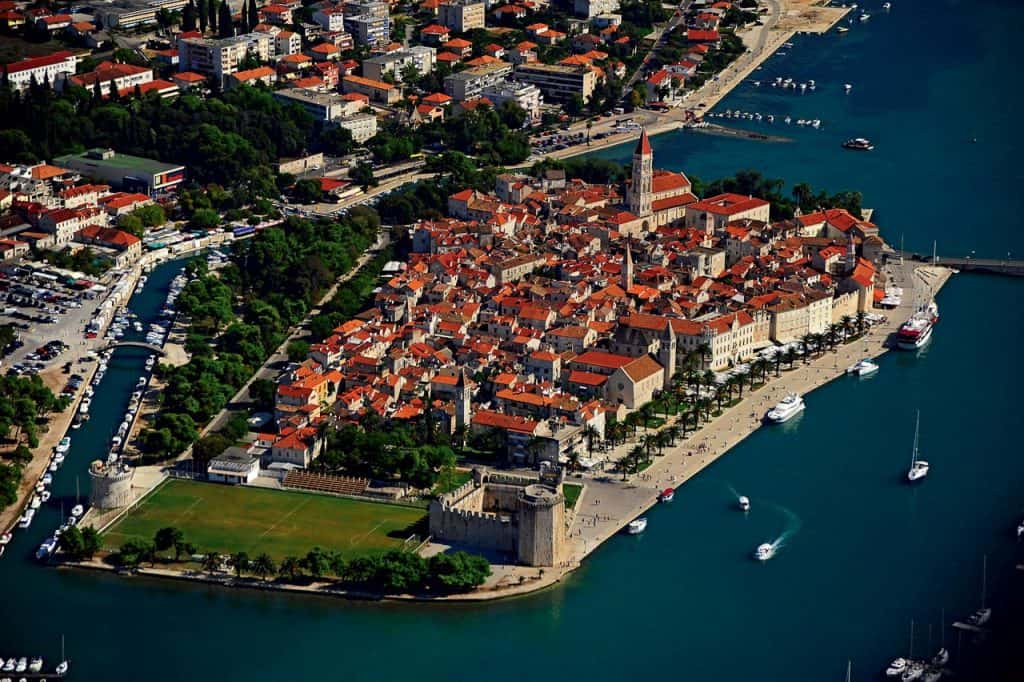
Portal sculptures are typical for the period of Gothic realism inspired by the ideas of Humanism, with features of the older Romanesque style. The construction of the Cathedral started in 1213 and ended in 1589 when the last floor of the tower bell was ended. The first floor of the tower bell was built in Gothic style, the second holds features of the Venetian floral gothic style, the third one was finished at the end of the 16th ct., and the fourth pyramidal top is adorned with four Mannerist sculptures. This bell tower is unique worldwide for its artistic styles interchanging on each of the four floors.
The most precious part inside the Cathedral would be the chapel of St. John, work of masters Niccolo Giovanni di Fiorentino, Andrija Aleši and Ivan Dunkovć, built in an unique technique of piling up stone tiles. It is notable to mention St. Sebastian’s church from 1477 as well as the oldest one preserved in its original form St. Martin’s church dating from the 9th ct. The Duke’s Palace, today the City Hall, was built in the 13th ct., and Renaissance facade was added in the 16th ct. It is believed that the monumental Gothic stairway positioned in the centre of the Palace was built by master Matej Gojković.
Photos I. Pervan, Pixabay &Unsplash
